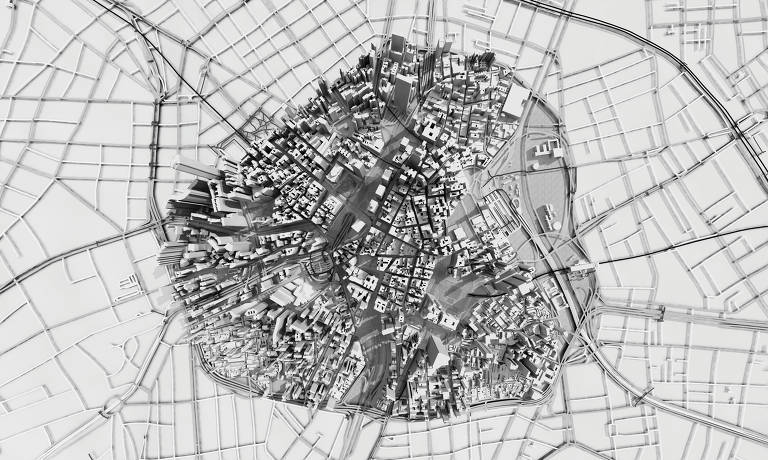An outsider can often better see the unique qualities of a place than a native. Architect Felipe Correa, a Native American Ecuadorian, acknowledges that São Paulo has many problems, but he thinks the city can teach a lot about urbanism.
The professor's enchantment with São Paulo began with his first visual contact with the city. On his first trip, he sat in a window seat on the left side of the plane. Moments before landing at Guarulhos airport, Correa saw a huge set of streets and a multitude of low rise buildings, punctuated with many towers. This view, which many consider banal and even ugly, fascinated him.
"I felt like understanding the mechanics that allowed this mode of urbanism," said Correa, who is a professor at the University of Virginia.
From this interest emerged "Sao Paulo: A Graphic Biography," a 336-page bilingual book format published by the University of Texas and Romano Guerra publishing houses. An exhibition with the same name is open until November 15 at the School from Gallery City. Both come from the two-year research funded by the Claudio Haddad foundation.
The research was conducted by an interdisciplinary group of teachers, curators, and researchers from Asia, Europe, and across the Americas. As a methodology, Correa explicitly encourages the dialogue of residents of São Paulo with people from outside and who bring distinct cultural references.
Translated by Kiratiana Freelon
